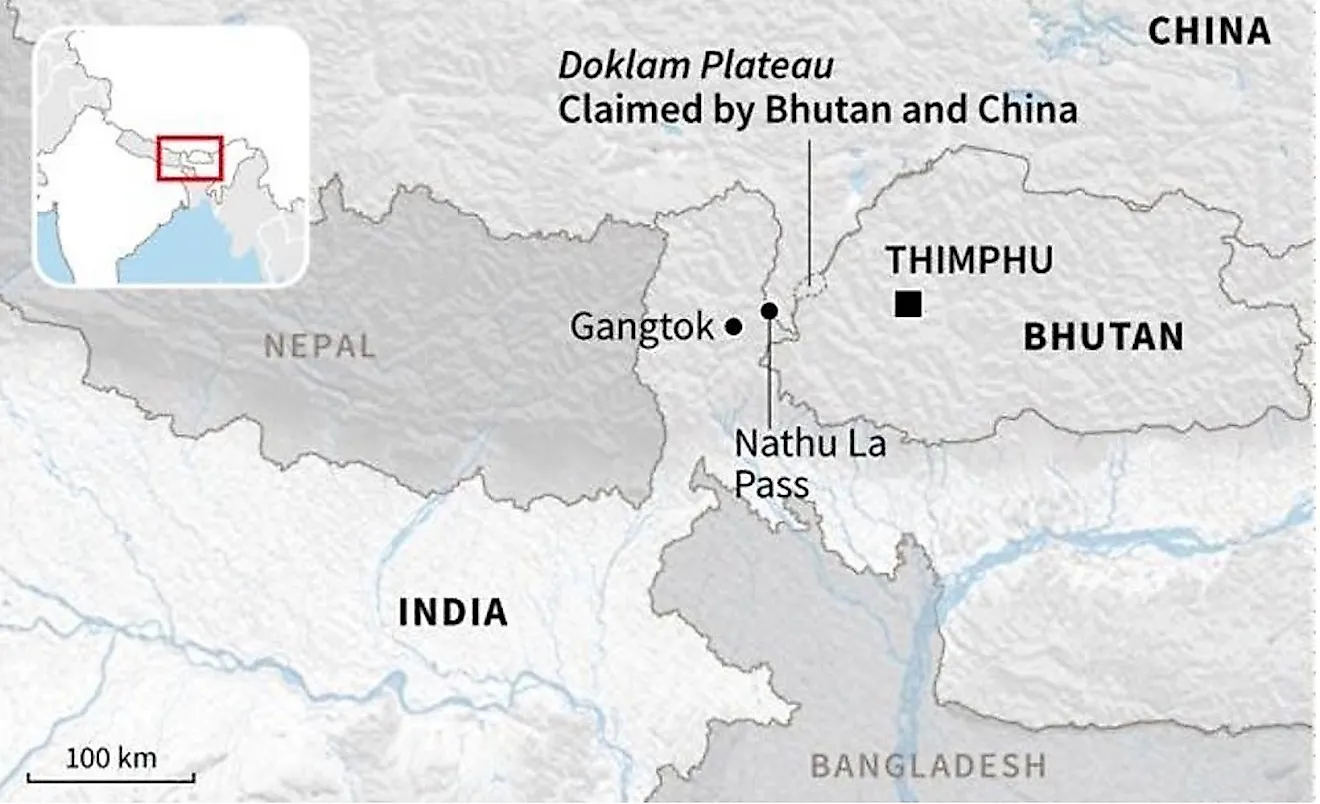Who Administers The Doklam Plateau?

- The Doklam Plateau is a disputed patch of land at the junction of Tibet, Sikkim (India), and Bhutan.
- The area of Doklam is of great strategic significance to India, China, and Bhutan.
- The negotiations to resolve the border dispute concerning the Doklam between China and Bhutan started in 1972 but remains unsolved.
In 2017, there was military standoff between the Chinese and Indian troops over Doklam Plateau, a disputed patch of land at the junction of Tibet, Sikkim (India), and Bhutan. The standoff began when the Chinese attempted to construct a road in the area which is also claimed by Bhutan. The Bhutanese protested the construction project, forcing India to increase its troops in the area. The reason for China’s construction of the road in the area is still not clear but Indians think it was a strategy to take over the area. However, the dispute over Doklam Plateau dates back to the 1960s and is yet to be resolved despite the several rounds of negotiations between China and Bhutan.
Where Is The Doklam Plateau?
The Doklam, also known as Donglang or Zhoglam, is an area characterized by a plateau and a valley, located between Chumbi Valley (Tibet), Ha Valley (Bhutan), and Sikkim (India). It lies on the China-Bhutan border near India. The Chumbi Valley is on the north, Sikkim on the west, and Ha Valley in the east. The geographical position of Doklam makes it of great significance to the three countries. Both China and Bhutan claim that the area is within their respective territories. Despite many years of border negotiations, the matter is still far from being resolved.
Significance Of Doklam
The area of Doklam is of great strategic significance to India, China, and Bhutan. The Chumbi Valley and Siliguri Corridor to the north and south of Doklam are important mountain chokepoints that would give due advantage to any country in global power competition. Bhutan and India believe that if the area falls under the control of the Chinese then their securities will be compromised. Thus, China’s desire for heights is considered the main motivation to take control of Doklam. Taking control of the area will benefit the Chinese in three main ways; they will have a proper view of the Chumbi Valley, outflank the Indian troops in Sikkim, and completely crush Bhutan in case of a war. Also, the Chinese would easily transport war machinery to the border with India, giving them an upper hand over the Siliguri Corridor.
The Border Dispute
For about 1800 years, from around the 2nd century BC, the historical Chinese maps showed Bhutan and Sikkim as parts of Tibet. From 1958, the maps started showing that large parts of Bhutan were part of China’s territory. Two years later, China claimed that Bhutan, Ladhak, and Sikkim have always been a part of it. Alarmed by such claims, Bhutan closed its border with China and stopped all its diplomatic contacts. It also signed a Friendship Treaty with India. In 1965, China accused Indian troops of crossing into Doklam and threatening their herders, triggering a dispute between China and Bhutan. Each country claimed that Doklam was under its sovereignty.
Border Negotiations And Current Status
The negotiations to resolve the border dispute between China and Bhutan started in 1972. At the time, India was playing a supporting role, a role that was contested by China. In 1984, Bhutan and China began the negotiations without India, with Bhutan accepting to cede part of its territories to China. In 1996, China offered a deal to Bhutan by offering to give up the central region for the northwest region of the disputed area. However, after over 20 rounds of border negotiations, the two countries are yet to find a solution.











